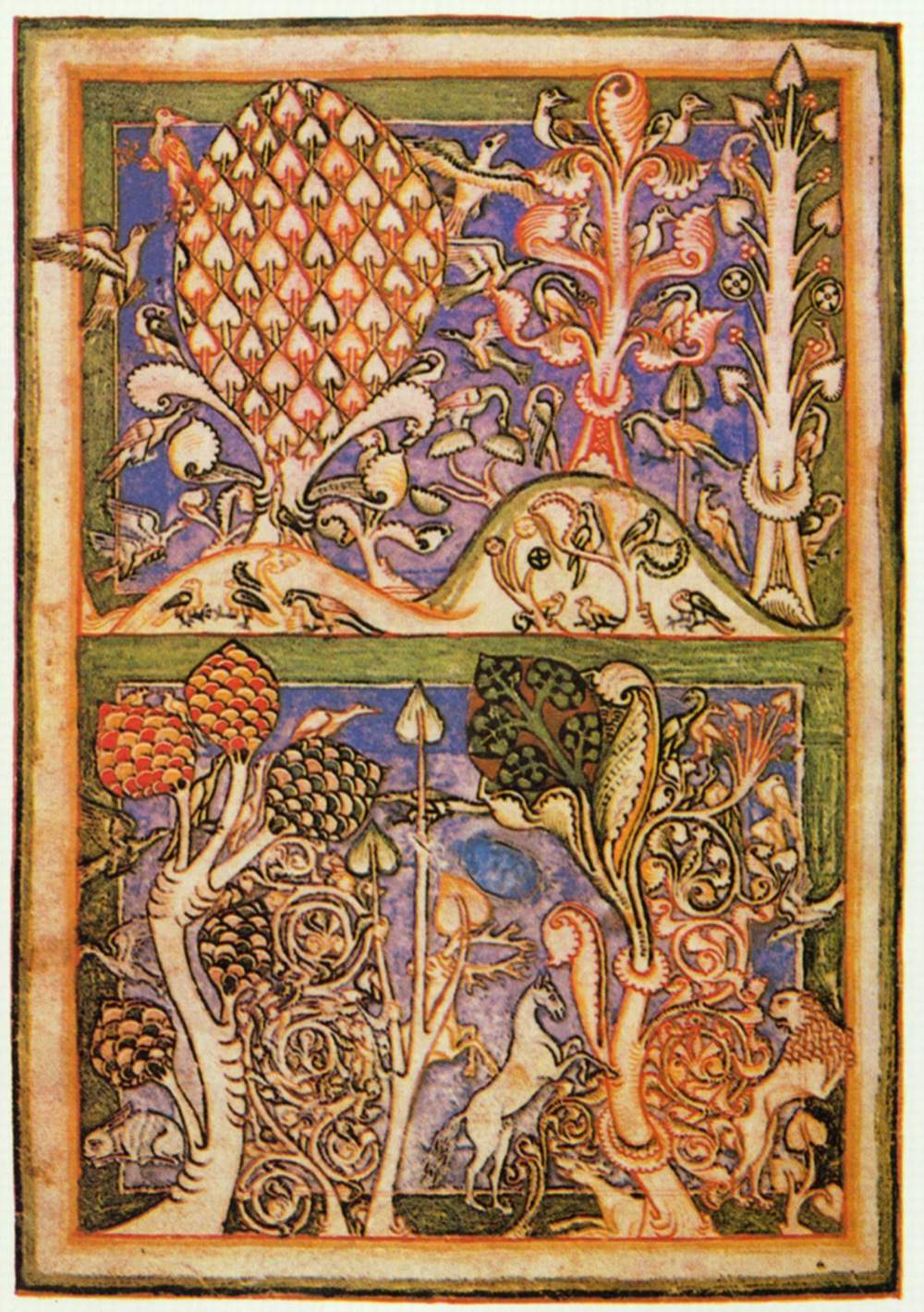I’ve been working on a dance routine to “Carmina Burana” and wanted to do some research on the history of the piece. I was planning to write more about gargoyles this week, but I decided to write about this instead when I saw a picture of the original medieval manuscript.*

Before it was a well-known piece of music, the Carmina Burana was a Gothic manuscript containing eight illustrations and two hundred and fifty-four poems, primarily in medieval Latin with some in old German, from the eleventh through thirteenth centuries. (1) It was created around 1230 and discovered in the library of the Benediktbeuern Abbey in Bavaria in 1803. While likely originating from somewhere in that area, the Carmina Burana was not necessarily created at the Benediktbeuern Abbey, though that location is the root of the name “Burana”. The manuscript is now at the Bavarian State Library in Munich, Germany.

What is most interesting about Carmina Burana is the content of its poems. One would probably expect medieval Latin poems preserved in a manuscript found in a monastic library to be pious in nature, but those of the Carmina Burana are precisely the opposite. Many satirically criticize the Church establishment, while others celebrate alcohol, sex, gambling, and the like. The numerous authors of the Carmina Burana poems are known to have been unemployed clerics and bored theology students, often referred to as “Goliards”. Despite their supposed professions, Goliards are known to have lived itinerant and pleasure-seeking lifestyles; they were much more likely to poke fun at the Church than they were to follow its doctrine. Many wrote songs and poems poking fun at Church customs and celebrating rowdy living. (2) The Carmina Burana is the best-known surviving collection of Goliard poetry, but it is definitely not the only one.

Most people probably know Carmina Burana in its later, musical form. In the 1930s, German composer Carl Orff (1895-1982) set twenty-four of the Carmina Burana poems to music in a cantata of the same name. The most famous section is “O Fortuna”, based on an ode to the Roman goddess of fortune and appearing twice in Orff’s composition in two different variations. (3) Orff’s Carmina Burana has inspired many other musicians, appeared in movies, and been used in dances and other performances. The version I’m using for my performance is a pulsating 2009 adaptation by the phenomenal Trans-Siberian Orchestra.

It is difficult to explain exactly why Carmina Burana, particularly Orff’s rendition, has had such lasting appeal, but I would have to think it has something to do with the ancient, weighty, and mysterious feeling of the Latin words, unintelligible to most of today’s audience and yet perfectly matched by Orff’s music. The figure of the Goliard, schooled in the ways of the Church and seeming to belong to it, while living a life at odds with it, fascinates as well. It poses a striking contradiction with everything the songs seem to represent upon first hearing them, but upon further reflection, their mystery and even danger just makes the songs that much more intriguing.
*Last time I decided to research music I was using for skating or dance, I ended up with this article, which has been among my most linked-to.
Sources:
- Cave, Charles. “Carmina Burana“. 1995. Accessed August 16, 2015.
- Teach Yourself Latin. “Carmina Burana“. Accessed August 16, 2015.
- Wikipedia. “Carmina Burana“. Accessed August 15, 2015.
- Wikipedia. “Carmina Burana (Orff)“. Accessed August 16, 2015.
- Wikipedia. “Goliard” Accessed August 15, 2015.


Reblogged this on First Night History.
Carmina Burana is my favorite piece of music yet I knew little about its history. Thank you for this post.
I’m glad you enjoyed!
Back in Helen Waddell’s day it seems to me that there was some doubt about who wrote “Goliardic” poems. Has the debate settled down since?
In my understanding, there is a general consensus that Goliards are responsible for the “Carmina Burana”, but the identities and regional origins of the specific Goliards are unknown. Is that what you’re referring it? I don’t know tons about the topic, so I would love to hear any insights you might have.
Helen Waddell made it sound like there was a debate whether the Goliards were a real group of wandering students, or a phantasm created by middle-aged church officials wishing they had had more fun when they were young and unattached (50 years before postmodernism, note!) But that was ninety years ago.